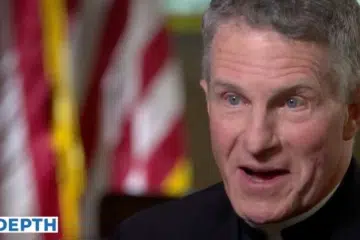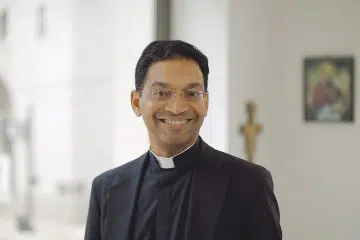The Body and Purity of Heart
Note: This article is part of an ongoing series on Pope St. John Paul II’s “Theology of the Body” (TOB).
In Matthew 5:27-28, Jesus reaffirmed the sixth commandment and brought it to fulfillment by teaching that one must refrain not only from overt acts of adultery but also the interior act of adultery in the heart. As we saw last month, this adultery in the heart consists of looking at another in a reduced way, seeing his/her body merely as an object by which I might satisfy my sexual urge. When I allow myself to look at and think about others in this way, I fail to regard them as persons made in God’s image and possessing inestimable dignity. I also lose sight of the spousal meaning of the body, which signifies that through the body and sexuality a man and a woman can make a total gift of self, forming a communion of persons in the context of lifelong marriage.
According to Pope St. John Paul II, adultery in the heart can even occur within marriage. Taking the example of a man looking lustfully at a woman, “Even if he were to look in this way at the woman who is his wife, he would commit the same adultery ‘in the heart’” (TOB 43:2).
This surprising teaching may lead some to conclude that the Catholic Church has a dim view of the body and sexuality, perhaps seeing them as “bad” or “sinful.” This could not be further from the truth. Rather than seeing in Christ’s teaching on adultery in the heart “a ‘condemnation’ or accusation of the body,” Pope St. John Paul II saw an “affirmation of the body as an element that, together with the spirit, determines man’s ontological subjectivity and participates in his dignity as a person” (TOB 45:1). In other words, the body is integral to who we are as human persons, and it shares in the dignity we have as sons and daughters of God. The body reveals the person. When we see a living human body, we see a person made in God’s image, and what we do to the body, we do to the person.
For this reason, the Church also lifts up the value of sexual intimacy, seeing it as deeply personal and dignified. Through conjugal relations, man and woman engage in a total gift of self that has the capacity to effect an indissoluble sacramental bond. Far from seeing them as “bad” or “evil,” John Paul II taught that the body and sex “remain ‘a value not sufficiently appreciated’” (TOB 45.3).
Nonetheless, we all experience tensions, struggles and temptations to lust. These do not come from the body per se, but from the fallen human nature we inherit. Due to original sin, all of us experience concupiscence (i.e., disordered desire), which pulls us in various ways to selfish ends, thereby falling short of God’s law. Indeed, out of our wounded hearts come all manner of sinful thoughts and urges (cf. Mt. 15:19). For this reason, Jesus Christ came to redeem us and give us new life. The whole human person is called to participate in this redemption, including the body and sexuality. However, it is the heart, most of all, that Christ desires to possess and transform. This inner renewal is the foundation of all Catholic sexual ethics:
“The Christian ethos is characterized by a transformation of the human person’s consciousness and attitudes… such as to express and realize the value of the body and of sex according to the Creator’s original plan” (TOB 45.3).
Christ’s commandment on adultery in the heart is a call to us for inner transformation. As Pope St. John Paul II taught, “One fulfills the commandment by ‘purity of heart’” (TOB 43:5). Let us, then, continue to ponder the meaning of purity of heart and the redemption of our bodies and sexuality.
 Dr. Andrew Sodergren, MTS, PSY.D is a Catholic psychologist and director of psychological services for Ruah Woods. He speaks on the integration of psychology and the Catholic faith. He and his wife, Ellie, have five children.
Dr. Andrew Sodergren, MTS, PSY.D is a Catholic psychologist and director of psychological services for Ruah Woods. He speaks on the integration of psychology and the Catholic faith. He and his wife, Ellie, have five children.
This article appeared in the March 2024 edition of The Catholic Telegraph Magazine. For your complimentary subscription, click here.














